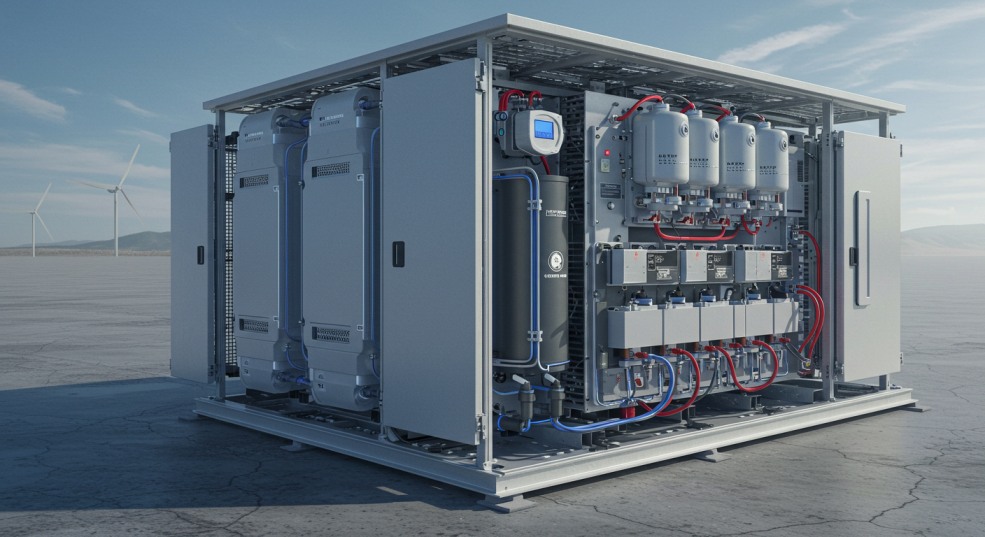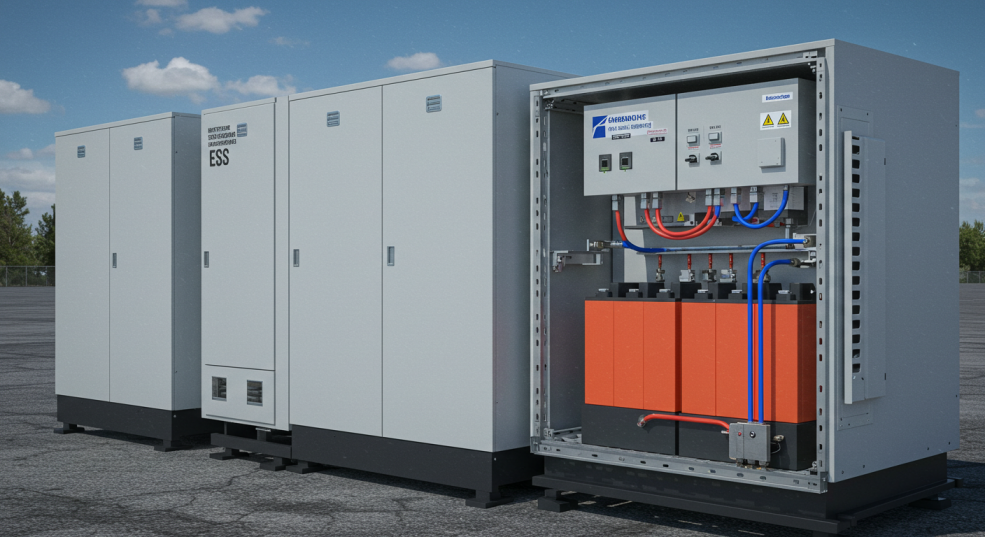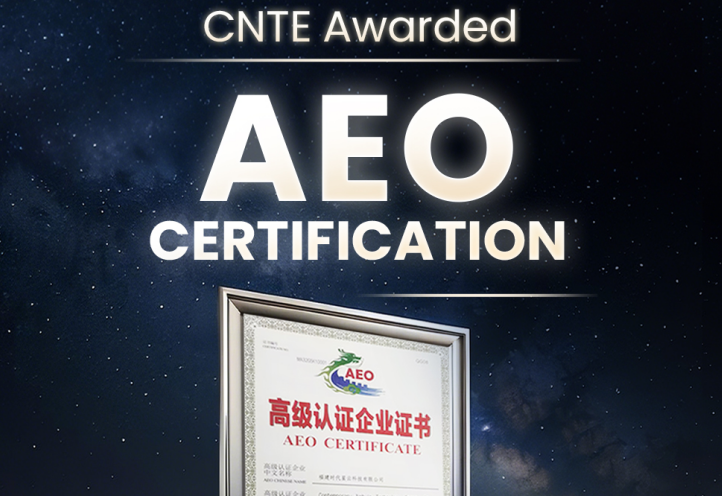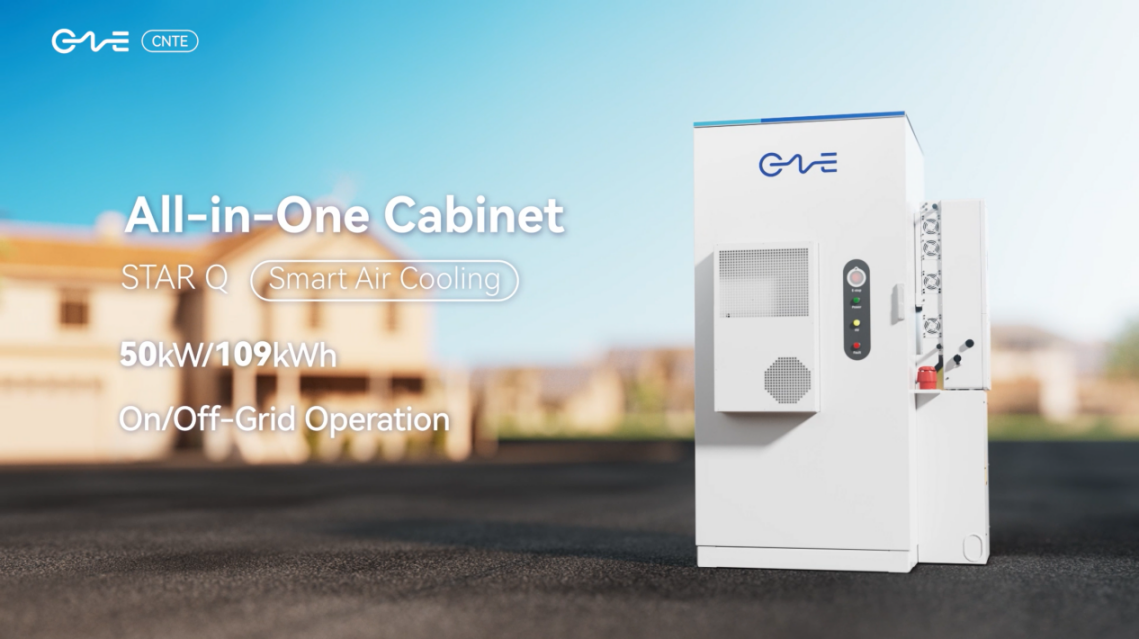Liquid-Cooling ESS: The Key to Efficient Energy Storage
Liquid-Cooling ESS: The Future of Energy Storage Solutions
In the modern world, energy storage systems ESS are becoming increasingly important in supporting renewable energy sources, stabilizing the network, and ensuring the rational use of energy resources. It is therefore important that great efforts are made to ensure that conditions favorable for liquid-cooling ESS are created as the demand for reliable and high performance energy storage increases. Liquid cooling of the ESS is one of the best suggestions as a solution.
STAR T-285: The Best Liquid-Cooling ESS for Superior Energy Storage
The STAR T-285 is a newest liquid-cooling electrostatic shield system suitable for performance and protection. With unique liquid cooling system it implements contemporary thermal control mechanisms to avoid burning of the batteries and hence increases battery durability. The STAR T-285 can provide dependable energy storage for commercial and industrial use as controlled consistent temperature. It has smart EMS that enables it to monitor and even diagnose faults as they happen in real-time. Across from grid-destined energy storage to clean incremental engagements, the STAR T-285 is the most preferred option for all businesses that need safe, cost-effective, and scalable solutions to their power storage needs.

Why Choose Liquid-Cooling ESS?
The subject of this paper is crucial in the contemporary landscape because as the energy infrastructure becomes increasingly complex, it could be challenging to ensure that energy storage systems are fairly safe and efficient. Intelligent liquid- cooling ESS, which encompasses state-of-art battery storage systems, can widely be used in commercial and industrial application. That is why the liquid-cooling technology of ESS is optimal for business energy storage.
Enhanced Temperature Regulation
Managing temperature is one of the most important factors in operating and maintaining energy storage systems (ESS). That is why batteries and particularly LFP cells generate heat during charge/discharge cycles. If exposed to high temperatures then it can reduce the working rate, decrease battery lifespan, or lead to thermal crisis. Liquid-cooling ESS makes it possible to regulate the temperature in a good way and thus solve the problem that has been discussed above.
Improved Safety Features
In energy storage systems security is very important factor to be considered. Liquid-cooling ESS offers extraordinary safety through multiple layers of protection. The quadruple fire protection, insulated protection, and state of the art fire protection and alarm systems make it possible to detect any form of danger and act before the danger manifests.
Intelligent EMS (Energy Management Systems) are incorporated to monitor of key performance indicators that check and make ensure that all functions within a set safe operating range. This makes Liquid-Cooling Electronics for Data Centers and Switching Stations a safe solution which gives the guilty organizations an assurance against the calamities of fire out-break through heating and short circuits among others.

Fast Construction and Flexible Applications
Furthermore, one of the major benefits of liquid-cooling ESS is versatility, which has been discussed earlier in this paper. It also provides fast construction time, which can be again beneficial for businesses since they can rapidly expand the capacity of energy storage. With the intelligent EMS management system also it becomes easier for the firm to manage the system performance through a cloud platform which also enhances the operation.
Sustainability and Environmental Impact
To state, liquid-cooling ESS is among the ways through which businesses can work towards green energy storage as they embrace new renewable energy solutions. These systems enable the incorporation of renewable energy sources such as solar or wind power into the power grid on a long-time basis as well as they provide the storing of electric power. Liquid cooled ESS is a favourable option within diverse applications due to the advantage of providing a reliable method of energy storage which is essential in ensuring that companies who are keen on reducing their emission levels to near zero are able to achieve this.
Cost-Effective Long-Term Investment
At the same time, it is crucial to understand that any R&D stepping into liquid-cooling ESS entails quite a large investment at first, but looking at long-term outcomes all extension costs will pay for themselves. Accurate regulating of liquids maintains the battery storage system’s operation and longevity and minimizes expenses spent on its repairs or replacement. The factor that is associated with the ability to expand capacity flexibly means that businesses can extend the storage capacity of energy they need without having to replace the entire storage system, hence make a cost effective power source.
Efficient Heat Dissipation
One more significant issue within the process of creating energy storage systems is the cooling problem. Chemically storing energy and supplying it one would also result in the conversion of the stored energy into heat energy hence the need for that battery to be recharged. If not well addressed, this heat may result to thermal explosion, destruction of components, or even fire risks. Liquid cooling for ESS helps in the regulation of temperature in that it dissipates heat produced from the battery cells in the electrical vehicle in a very timely manner.
Liquid-Cooling ESS for Industrial and Commercial Applications
Some of the uses of liquid cooling cannot be considered solely in residential energy storage, but they are relevant to commercial energy storage and industrial energy storage. Thus for this kind of application say grid-scale energy storage or renewable energy storage cooling is a necessity for continuous and efficient operation of the storage systems. In the case of the above-mentioned sectors, liquid cooling has the following advantages:
Scalability:
As touched upon earlier, liquid-cooling ESS can accommodate large industrial demand very quickly.
Energy Efficiency:
These systems can be used to deliver good performance all the time especially given the operation capacities.
Reliability:
Since energy storage cooling is becoming a realized reality, the system does not often have issues of overheating and as such, failure in its functionalities.
Conclusion
Liquid-cooling ESS is the future technology in the energy storage field since it enhances safety, efficiency, and dependability. It maintains temperature fluctuations at an optimal level, enhances security features, and has options for clients who want small and large-scale solutions. Because ESS enables the integration with renewable energy systems and minimizes energy losses, implementing such a system will be beneficial for every business that wants to maximize their energy storage. If you would like to know more information regarding liquid-cooling ESS or how it can improve your business, you may refer to CNTE Power Solutions.





